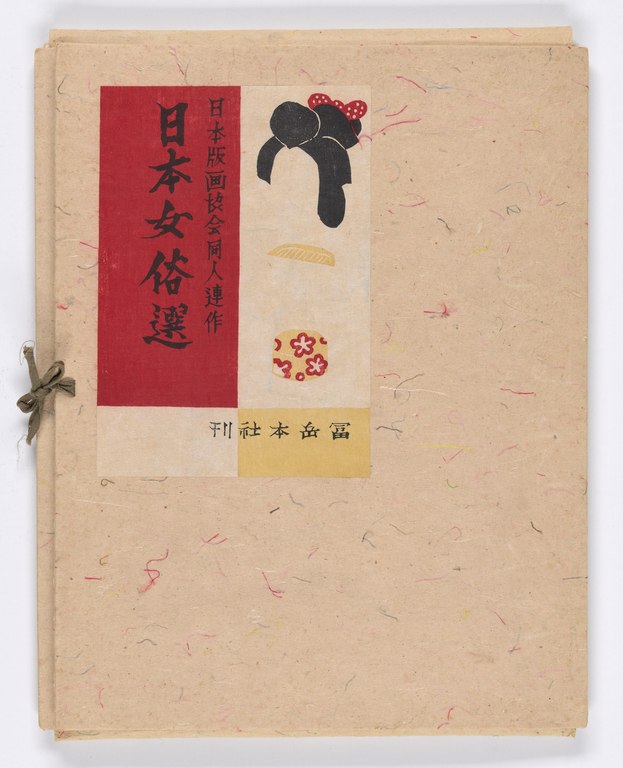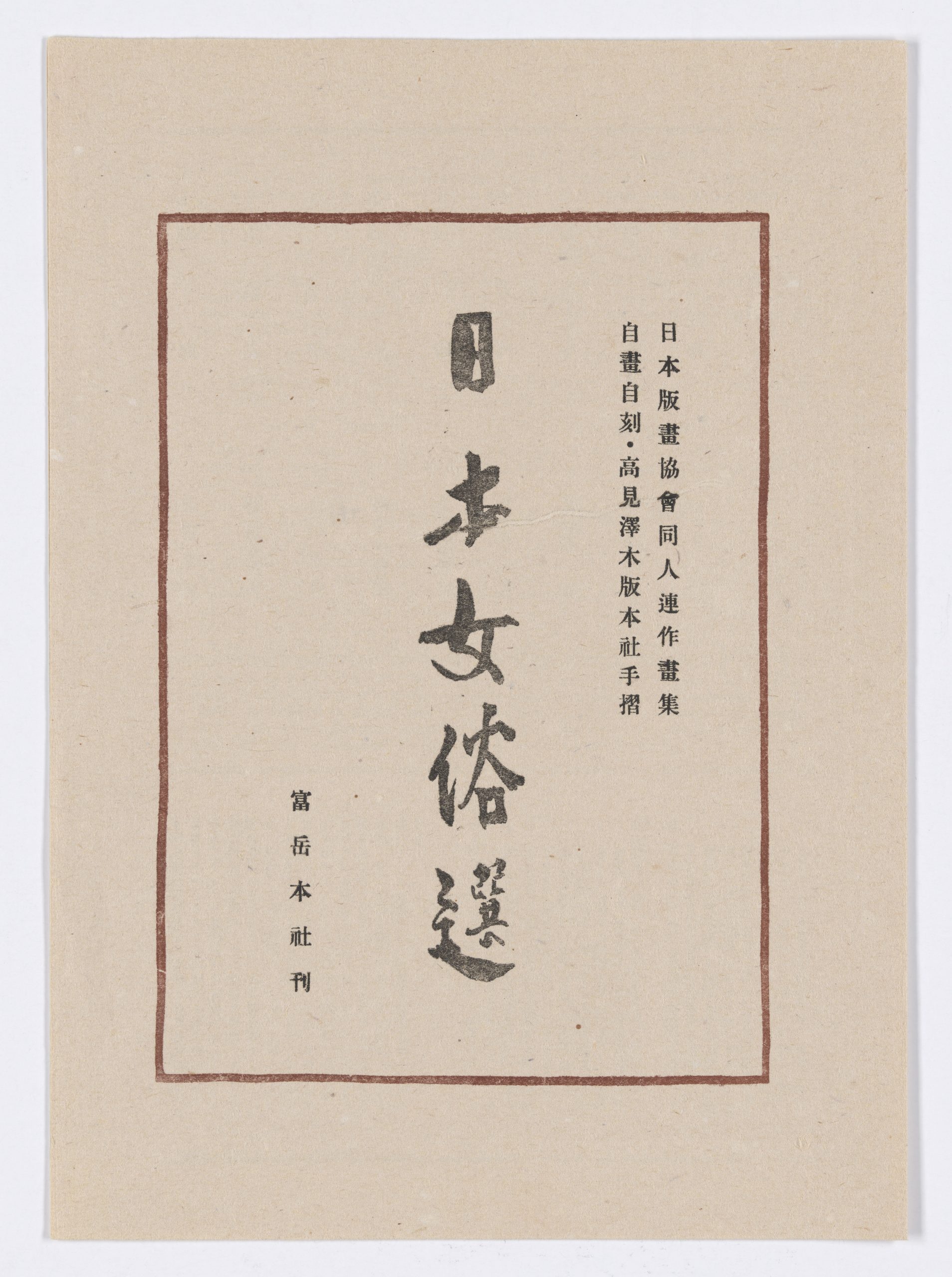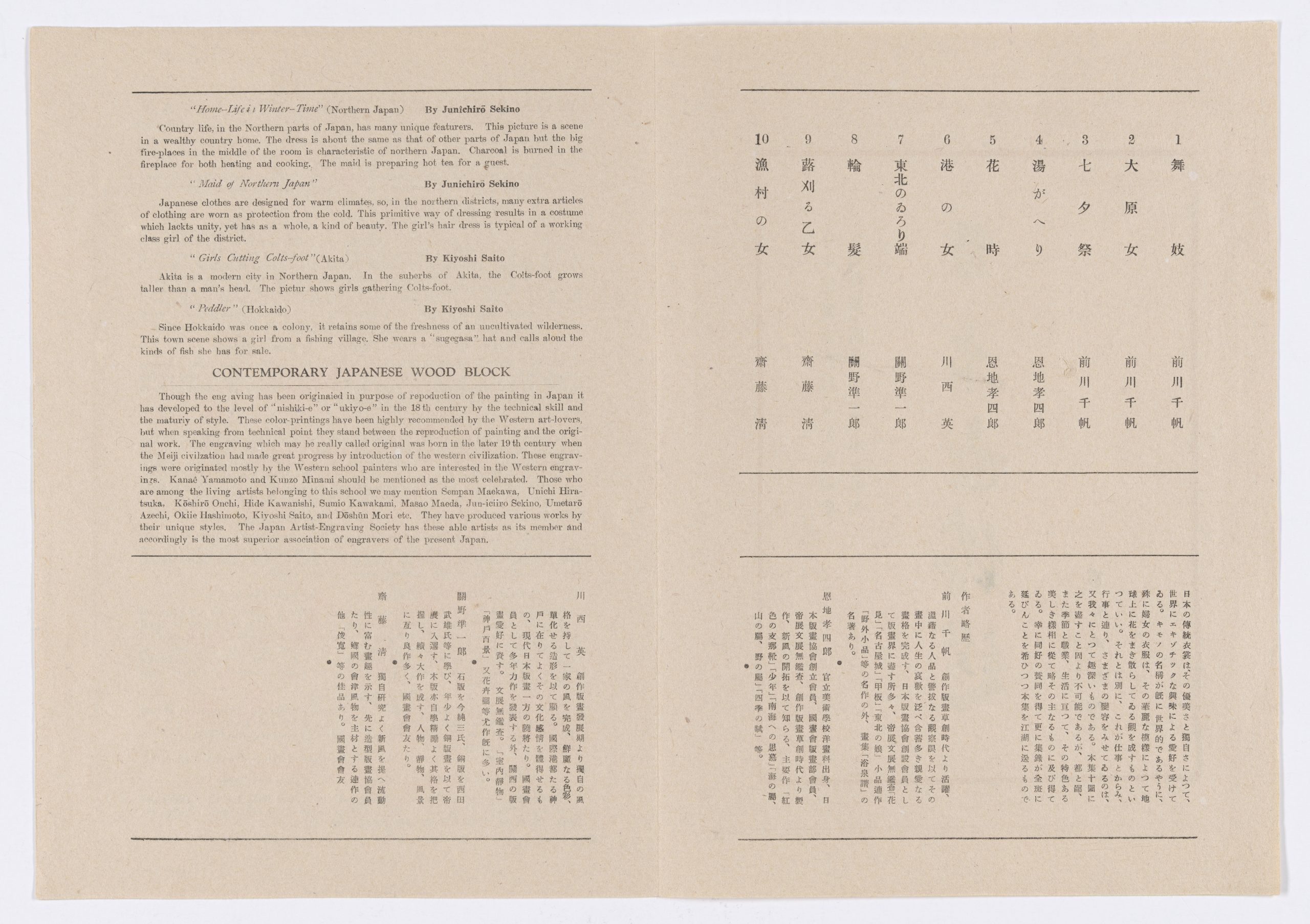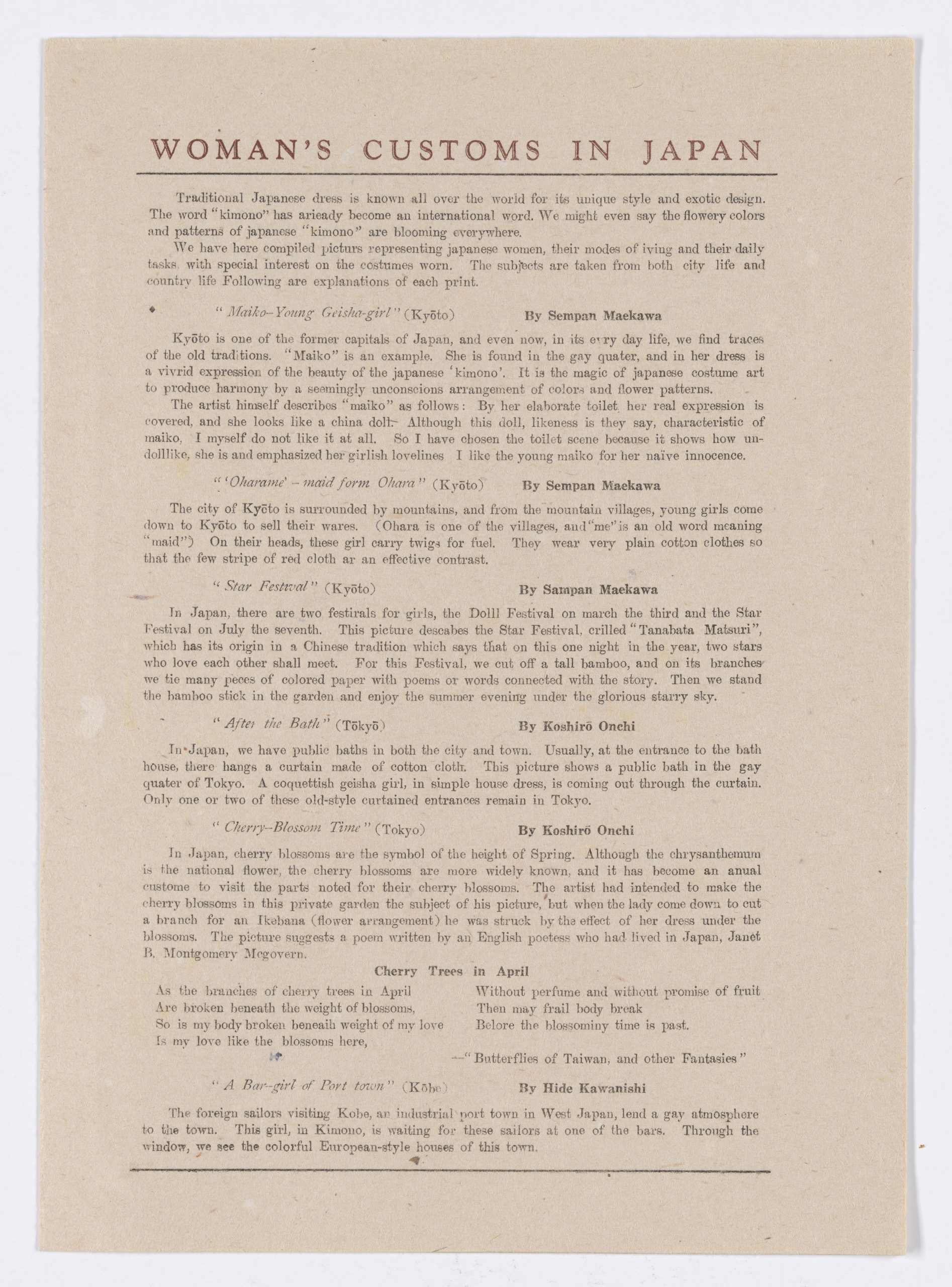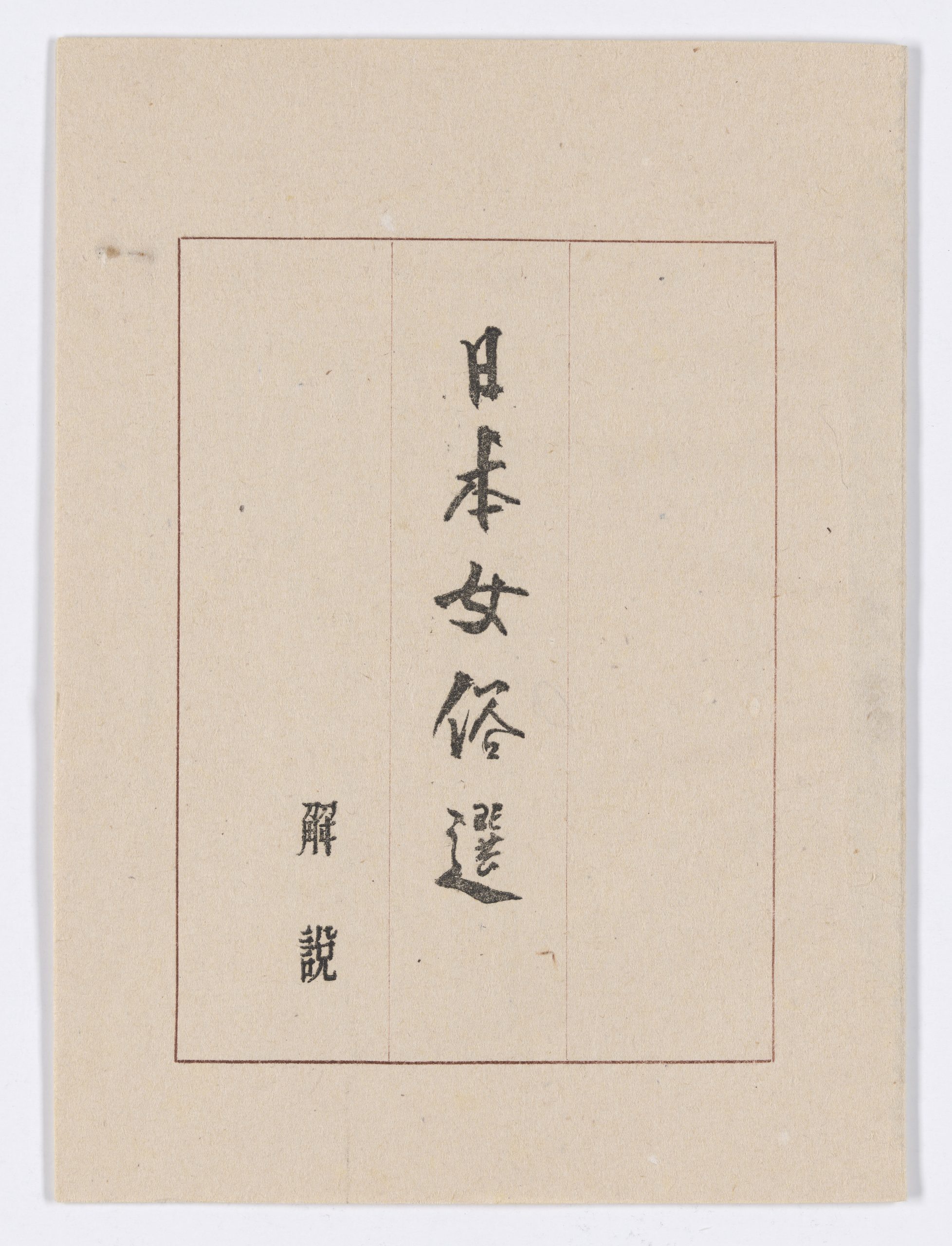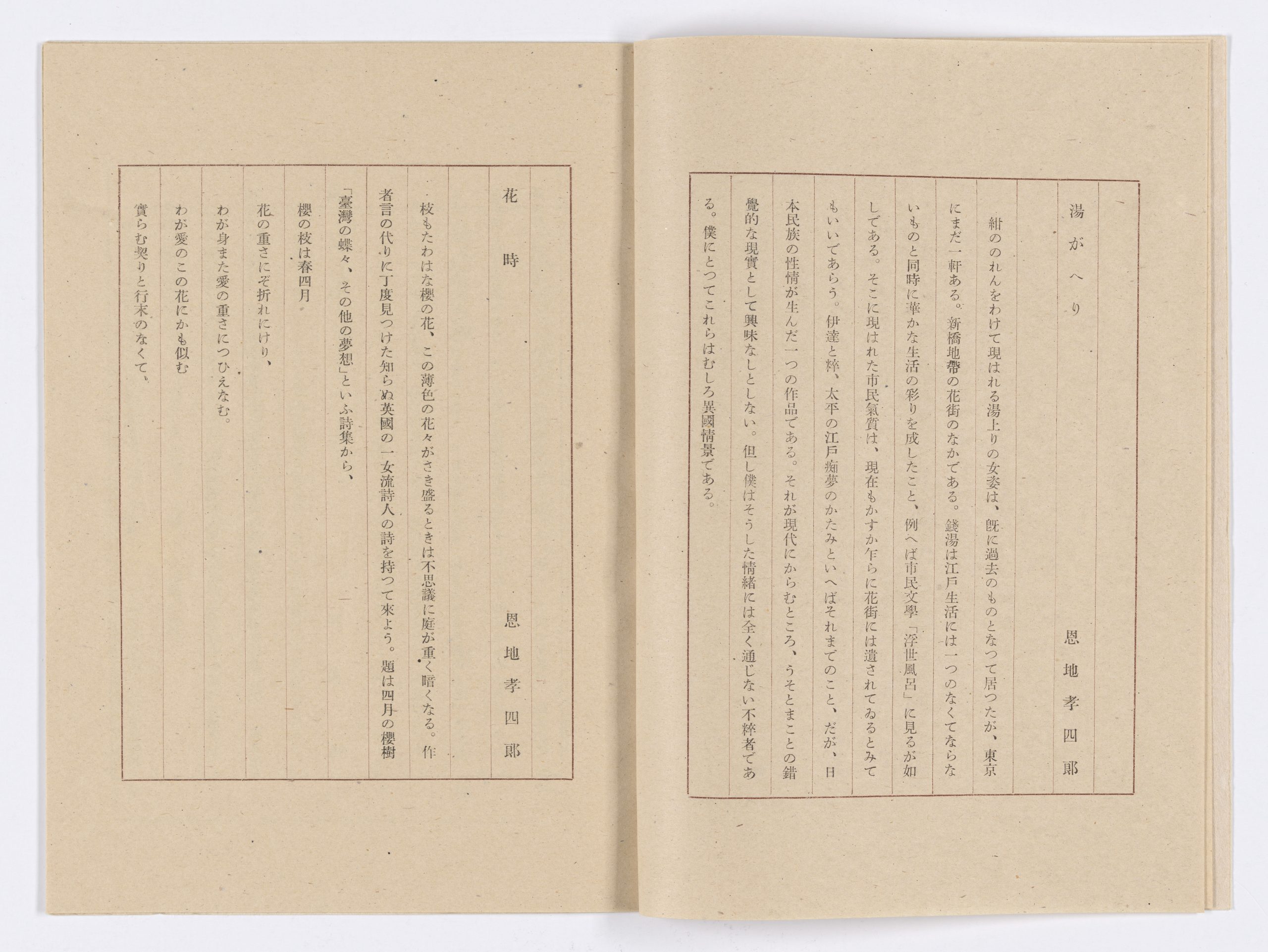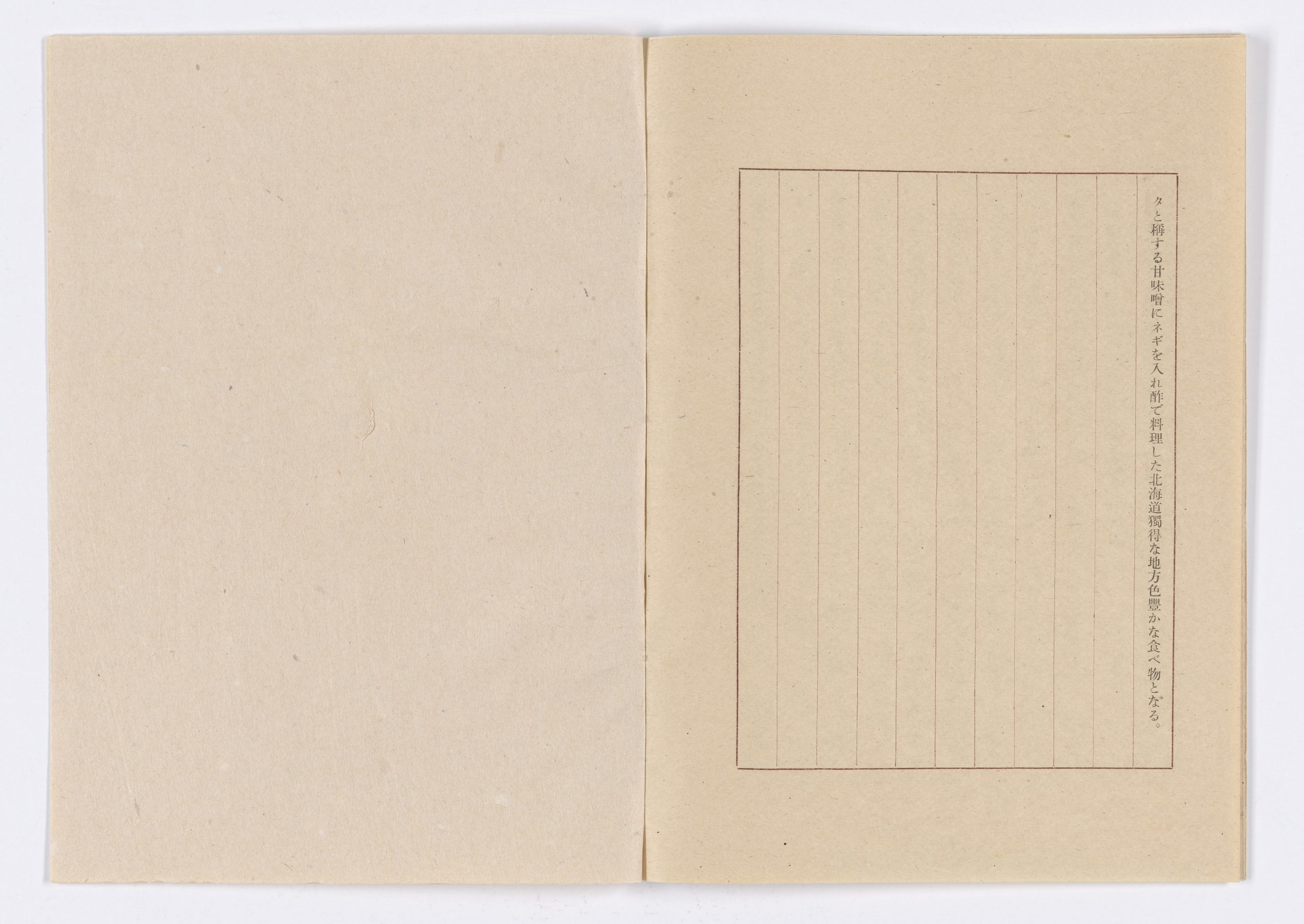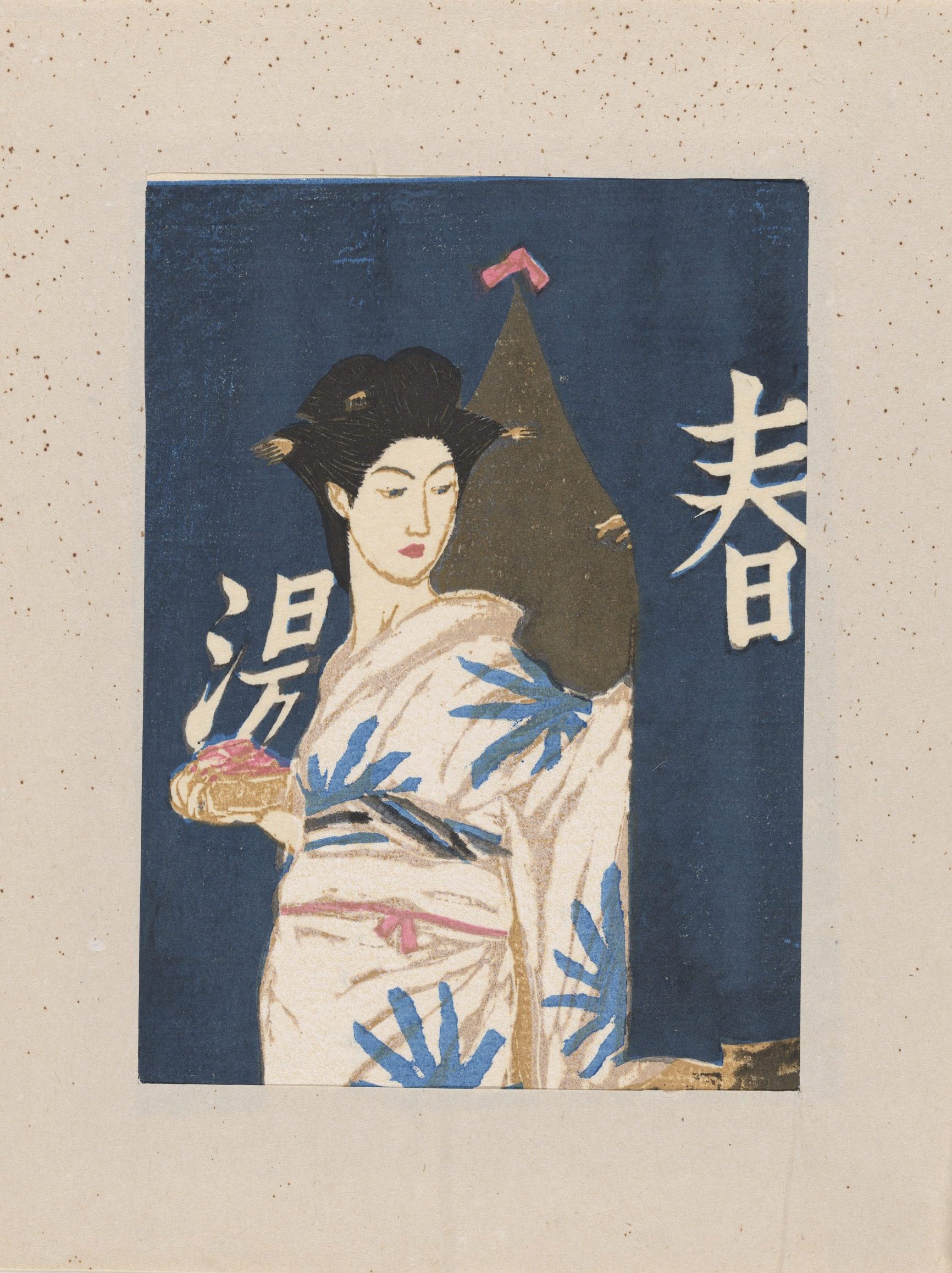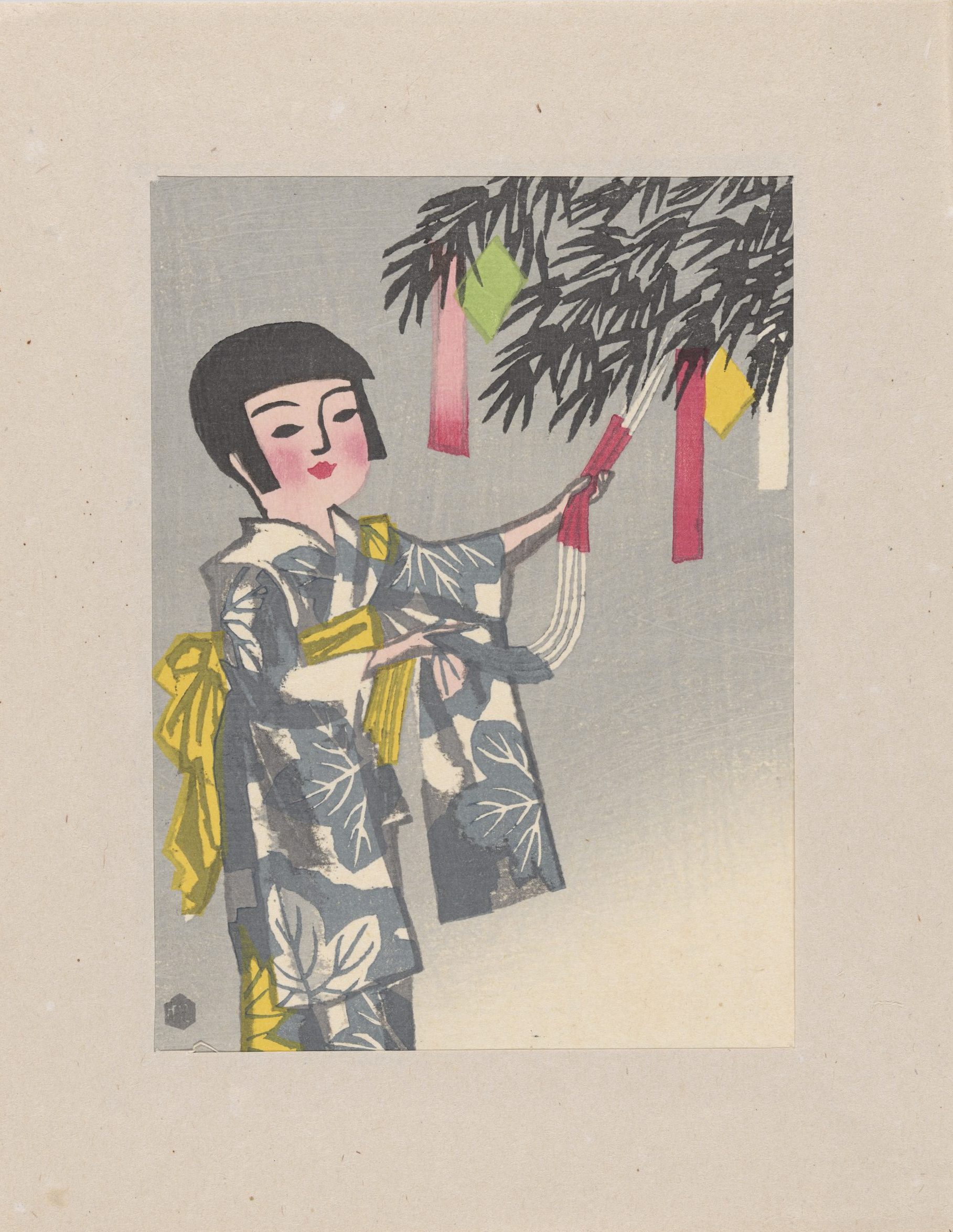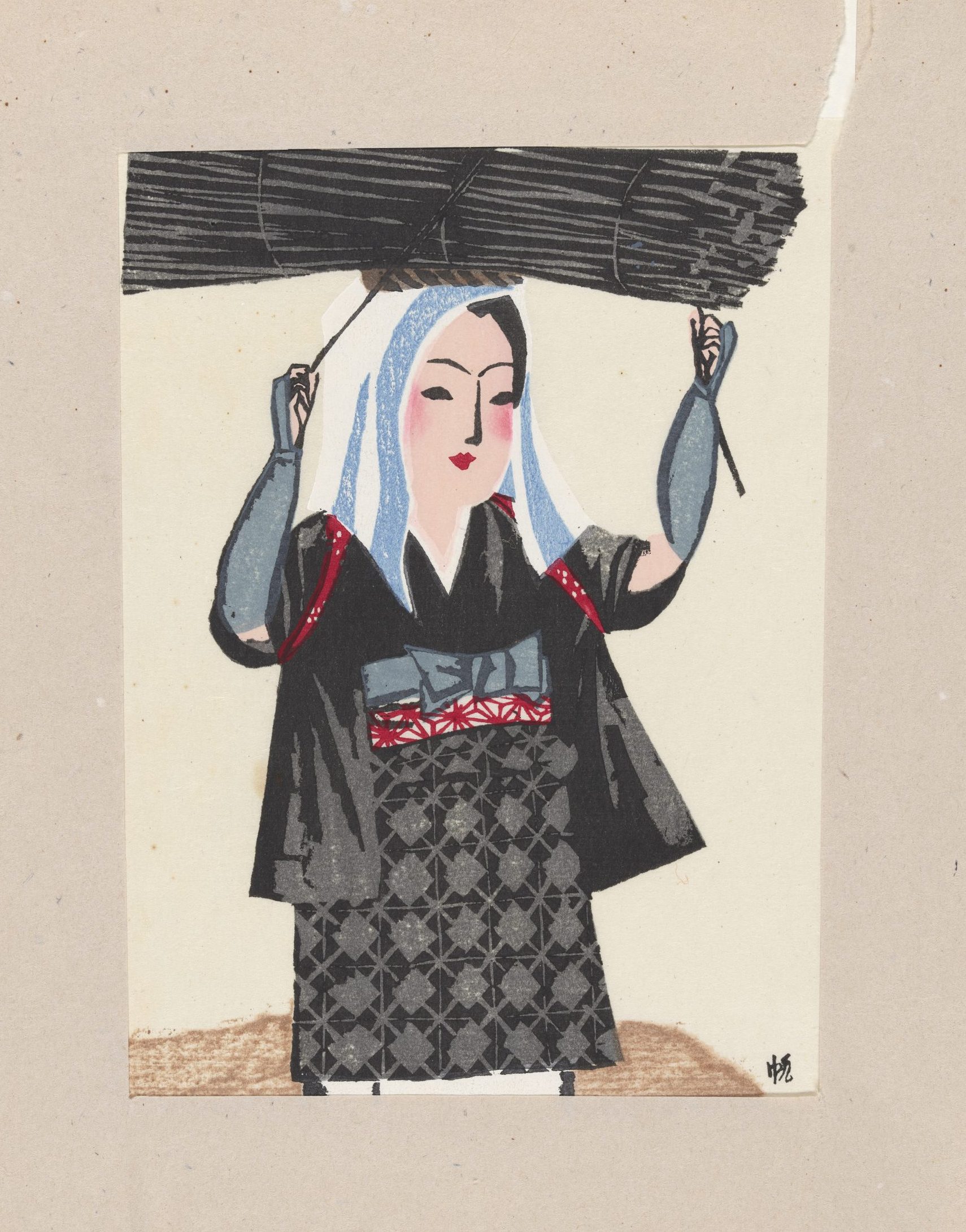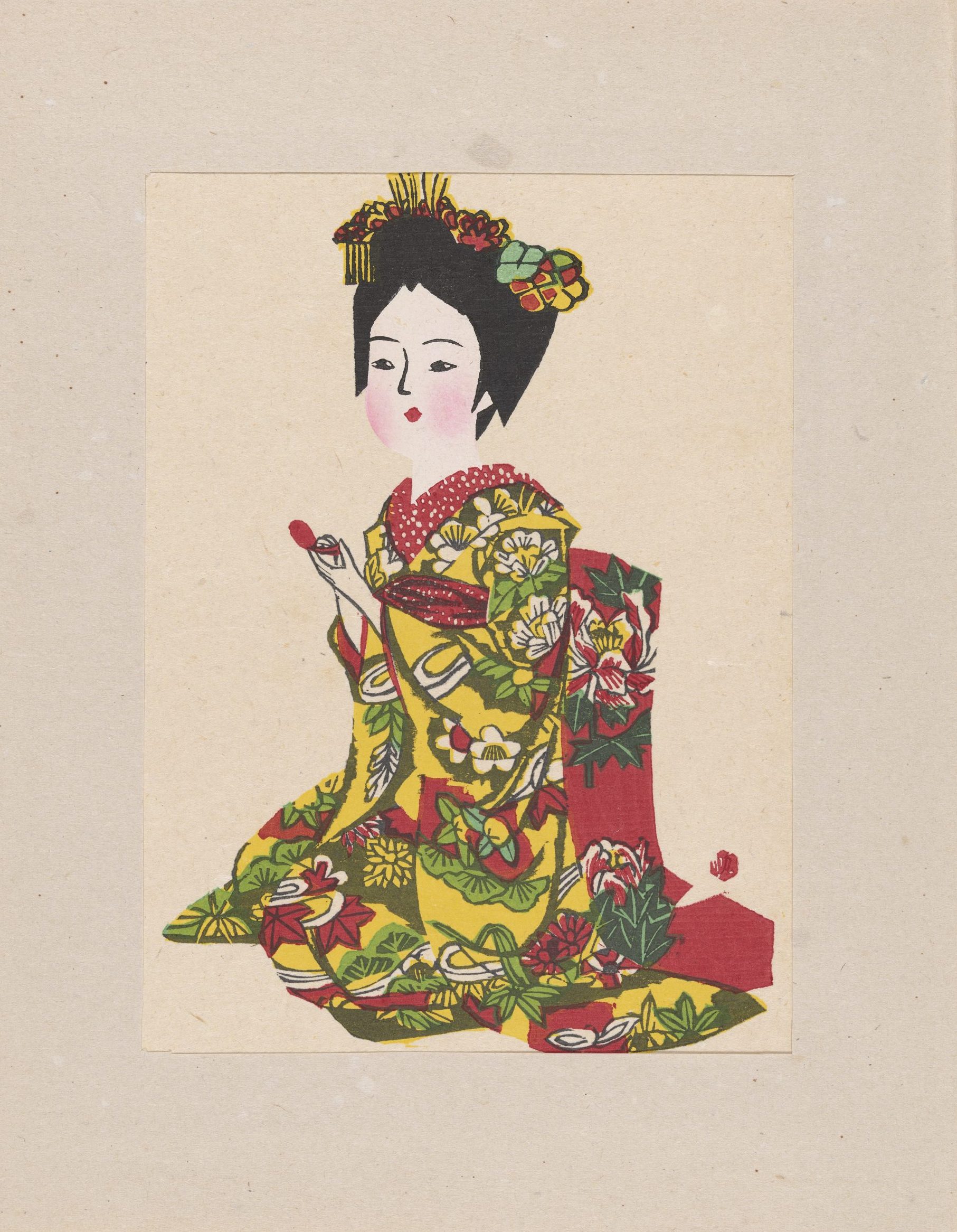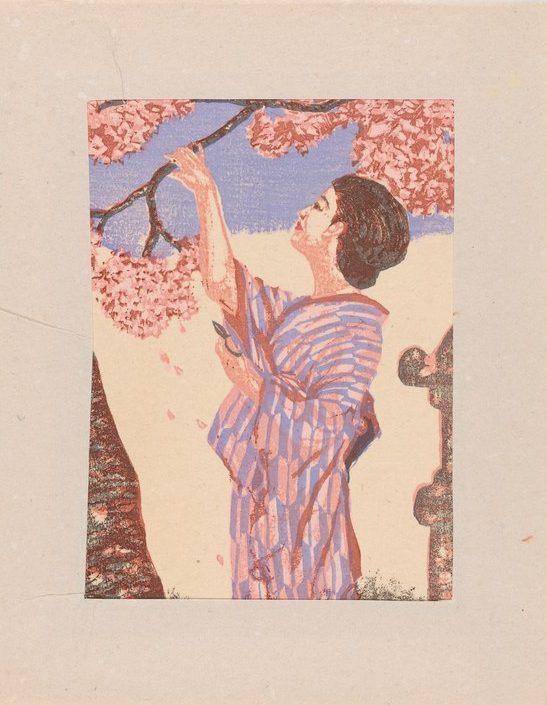Explore this object by clicking on the hotspots | View Full Screen
Onchi Kōshirō (1891–1955)
Japan, Showa era, 1946
Woodblock print; Ink and color on paper
H x W (Overall): 24.1 × 18.4 cm (9 1/2 × 7 1/4 in)
Purchase and partial gift of the Kenneth and Kiyo Hitch Collection from Kiyo Hitch with funds from the Mary Griggs Burke Endowment
S2019.3.1351
Onchi Kōshirō’s depiction of a Japanese woman with cherry blossoms may seem like a quintessential and timeless representation of Japan. But in the immediate postwar period, images of a woman in kimono and of cherry blossoms were often seen as ideologically charged national symbols. Cherry blossoms have been associated with both life and death, as their short bloom evokes feelings of wistfulness and transience. At the time the print was made, the traditionally garbed woman represented nostalgia for an imagined Japan of the past as well as for the peaceful comforts of home. Artists like Onchi grappled with the legacy of wartime nationalism and their role in it, navigating how to celebrate Japanese culture while trying to appeal to new patrons from the Allied occupation forces, primarily Americans.
Nihon jozoku sen Portfolio
This is one of ten prints included in the print portfolio Nihon jozoku sen (Women’s Customs in Japan), published in August 1946. The portfolios served many purposes. They reflected the artists’ feelings of loss and nostalgia for prewar Japan but were also meant to demonstrate Japan’s capacity for rehabilitation, peace, and democracy, and to attract buyers from the Allied occupation forces who were eager for art and souvenirs. Onchi contributed two prints. The other artists included in the project were Maekawa Senpan, Kawanishi Hide, Sekino Jun’ichirō, and Saitō Kiyoshi. The portfolio was the third in a series printed by Fugaku Shuppansha, following Tokyo kaikō zue (Recollections of Tokyo, Dec. 1945) and Nihon minzokuzū-fu (Native customs of Japan, Mar. 1946).



